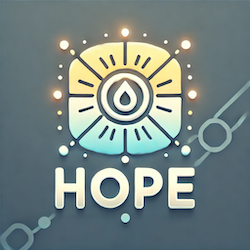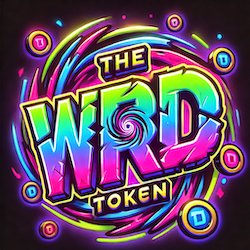Blockchains will have enormous value in the future. When I make that claim, I am not referring to a few hundred million dollars. We are looking at the trillions in value. Bitcoin is not going to be the only one to reach the valuation that starts with a "T".
This is not going to be based (solely) on market activity. There will be valid reasons for this ascension.
Because of this, a network like Hive offers tremendous opportunity due to the value proposition it provides. In a world where we are moving towards an agentic Internet, networks of this type are crucial.
I think the future of AI agents is blockchain. That does not mean it is required. Traditional rails could handle the activity, to some degree. There are a few limitations which will be discussed in an upcoming article.
One major issue is micropayments. This is something that traditional systems are hindered by. AI agents are going to process large volumes of transactions, often with minimal financial impact on each.
When it comes to Hive, there is tremendous opportunity.

Hive's Massive Value Proposition
So far, Hive is overlooked by the market. There is very little of interest for the masses.
That said, if we dig into the basic components of the network, we can see some alignment with an agentic future.
One of the main drawbacks to blockchain is speed. This is being addressed by many newer networks. It is not uncommon to see some having blocks in under a second. This is much improved over Bitcoin and Ethereum networks.
While speed is vital, cost is another. Here is where the conversation tends to wane. However, I feel it is the crux of the entire process.
Blockchains are databases. That means data is written. In the financial arena, this is not problem. That world is accustom to transaction fees.
Anytime data is written, there is a cost. When someone does a Facebook post, Meta is covering the cost of writing to its servers. The cost of operation is built in.
With blockchain, there is no hiding the cost. If you want to write to Ethereum, regardless of what the data, a transaction fee is required.
Hive has a system where the transaction fee is "hidden". Naturally, there is still a cost. This is hidden by the fact that someone can "pay" via staking. Through a non-tradeable token that is acquired by staking the main coin, one is able to transact in a manner where the direct transaction costs are removed.
Under this rechargeable system, transactions are not an expense. Instead, one makes an investment into the ecosystem, allowing for participation.
Effectively, the base layer coin became an access token.
AI Agents and Cost
AI agents are going to need settlement. This is no different than any other transaction.
Blockchains can operate as settlement layers. In fact, they excel in this area due to the immutable nature.
Once again, speed is key. Moving past that, we have the tx fee issue. If a bunch of AI agents are developed on Ethereum, to settle might require $10 or $20 depending upon the traffic. For a financial transactions of thousands of dollars, this is not a problem.
The problem arises when we look at microtransactions. It will not be uncommon for AI agents to be operating in fractions of a penny. This means a tenth of a cent might be the entire transaction value. How can most networks handle this?
Hive has no problem with something like this. As a settlement layer, the lack of direct fees make it ideal. This same premise applies to data storage. Imagine having to pay a few cents each time you hit "save" on your computer when working with documents.
This is what basically happens with blockchain.
Hive Backed Dollar
The other value proposition regarding Hive is the Hive Backed Dollar (HBD). This is another fundamental concepts that is going to really benefit from AI agents.
Stablecoins will be the currency used by these agents. This means the provides, i.e. companies like Circle, stand to benefit greatly.
Hive is an issuer of its own stablecoin, HBD. This is coded into the blockchain, operating in a truly decentralized manner. While there is no company behind it, the value garnered will be pushed to the network.
The key is to have the infrastructure that can support agentic activities. Since the coin is native to the chain, the infrastructure is already in place. It is not born out of smart contracts, requiring tie into to infrastructure that can process the automation activities.
HBD operates at the base layer. Developers can create any wallet system they desire, pulling from the chain, to fulfill any agentic needs. Reverting back to settlement, this is built in since all recording of coin movement is base layer. While derivatives could be designed elsewhere, it is not necessary for transacting. The network is designed to handle these transactions.
Scalability
One of the questions that arises when discussing blockchain is the ability to scale. Early systems, Bitcoin and Ethereum, ran into issues. With Hive, the question is not eliminated since it is impossible to answer.
Until scaling is required, few know what the limits are.
Can Hive handle hundreds of millions of transactions? This is not tested. So far, the chain has a couple million transactions per day. It is handled without issue.
Hence, we are left speculating whether a 10x in transactions is possible. Tests reveal these levels are possible. Of course, testing and real world use are two different animals.
From there, is another 10x possible?
As you can see, this would be an ongoing process. Consider the volume of activity that will be generated from tens of billions of AI agents. Naturally, not all of these will be on blockchain but they will be out there. They will run 24/7/365. We will see trillions of transactions.
Hive will need to scale. Fortunately, we are not at that point yet. There is time for the entire industry to expand in this area.
In Conclusion
There will be tremendous value in decentralized networks.
We are moving towards a future where compute, bandwidth, and storage capacity will be vital. Most are aware of how much data is generated on a daily basis. The majority is stored on centralized systems.
That said, a lot more is required. Humanity is also at a crossroads where it has to decide whether to accept a future where Big Tech has control of everything. Decentralization is the solution.
With the advancement in AI, developing AI agents is getting easier. Over time, the masses will be able to generate what is required. These will need a home.
Companies such as Coinbase already seek to be that destination for people. This is no better, in my view, than Meta or Google. Here we are just switching chairs on the Titanic.
Blockchain counters this. While the throughput and storage expanded greatly over the last 5 years, it is still minimal compared to the market. Hive could step in due to its fundamental attributes which offer powerful solutions.
For this reason, there is enormous value that can be captured. Most overlook this fact.
The next generation Internet is not human-to-human activity. It will be mostly computer-to-computer. This means networks that cater to this need will capture the value.
Posted Using InLeo Alpha








 )
)

